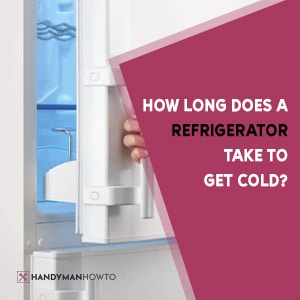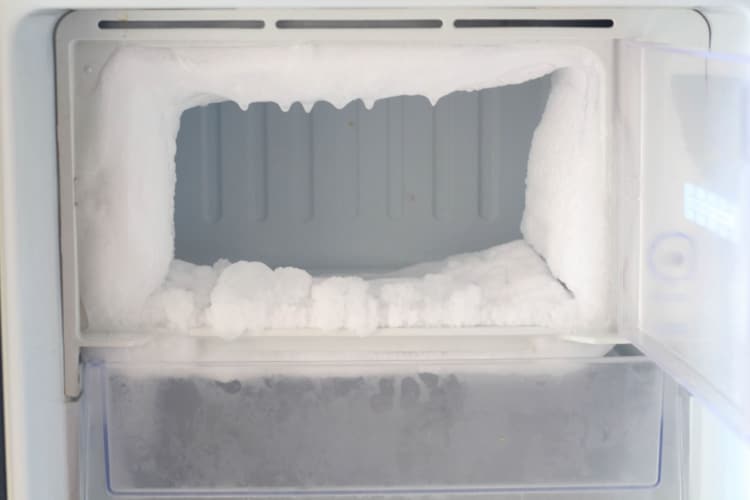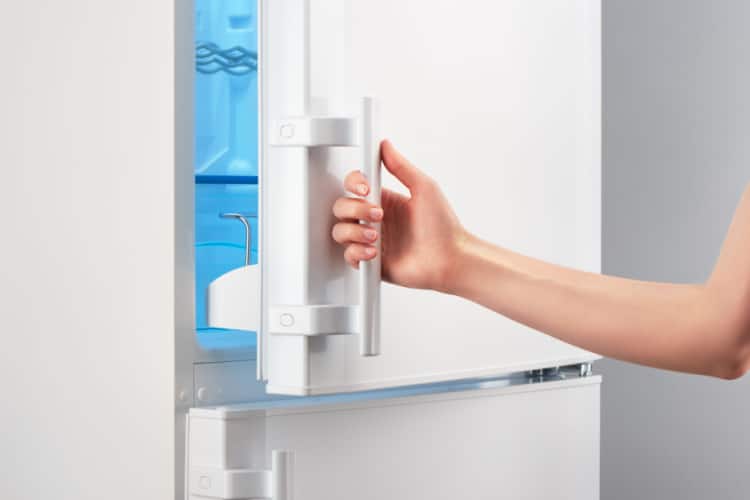You might be curious to know how long it takes for a new refrigerator or an old one plugged in after a power loss to get cold.
The answer to this question depends on various factors, including the refrigerator’s initial temperature, size, model, age, and condition, as well as the temperature in the room.

In this post, we’ll go over these factors in detail and offer advice on how to speed up the cooling process and diagnose any problems with your refrigerator’s cooling system. So, let’s get started and find out how long it takes for a refrigerator to get cold enough to use.
How Long Does a Refrigerator Take to Get Cold?

The average time for a fridge to get cold and reach its desired temperature is typically between 4 to 24 hours. However, the actual time differs from one refrigerator to the next due to a variety of reasons, which we’ll discuss in a moment.
The majority of refrigerators do, however, reach the FDA-recommended chilling temperature in about 12 hours.
What Is the FDA-Recommended Food-Safe Temperature?
The Food and Drug Administration (FDA) advises keeping refrigerators at a temperature of 40°F (4°C) or lower. This temperature range inhibits bacterial development and lessens the risk of food spoilage.
To keep the refrigerator’s temperature within this range, it’s crucial to monitor and maintain it routinely. FDA also advises using a refrigerator thermometer to track the temperature precisely and modify the settings as needed.
Factors That Affect How Long It Takes for a Refrigerator to Get Cold
Refrigerators need between 4 and 24 hours to get cold, with an average of 12 hours. The reason why the range is so broad is that each refrigerator is unique, so the speed of their cool down depends on several factors.
The Refrigerator’s Initial Temperature
The refrigerator’s initial temperature has the most significant impact on the fridge’s cooling down speed. For example, if the refrigerator is at room temperature, it may take up to 12 hours for it to reach the desired temperature of 40°F (4°C). On the other hand, if the refrigerator is already cool or has been recently unplugged, it may only take a few hours to become cold again.
The Size and Type of Refrigerator
The second factor that affects how long it takes for a refrigerator to become cold is the size and type. A small refrigerator will cool down faster than a large refrigerator, as the air has less space to circulate. A top freezer refrigerator may also cool down more quickly than a side-by-side or a bottom freezer refrigerator because cold air tends to settle in the bottom.
The Age and Condition of the Refrigerator
The third factor that affects how long it takes for a refrigerator to get cold is age and condition. A new refrigerator cools down faster than an older refrigerator, as newer models often have more efficient cooling systems. Additionally, it could take longer for the fridge to get cold if the cooling system isn’t working as it should.
The Room Temperature
The room temperature also has an impact on the fridge’s cooling time. When the ambient temperature is higher, the refrigerator has to work harder to maintain its desired temperature, which results in a prolonged cooling time. Conversely, the fridge may cool faster when the ambient temperature is lower.
Additionally, placing the refrigerator[2] in direct sunlight or near an oven or stove will affect its cooling performance. Keeping it in a cool area away from direct sunlight and heat sources is best if you want to ensure optimal cooling performance.
How Long Does It Take for a New Refrigerator to Get Cold Enough to Use?
If you have just purchased a new refrigerator, giving it at least 24 hours to get cold is recommended. This allows the refrigerator’s cooling system to settle and reach its optimal performance. During this time, it’s best to avoid opening the refrigerator door frequently, as this causes the temperature to fluctuate and makes it harder for the fridge to cool down.
How Long Does It Take an Old Refrigerator to Get Cold Enough to Use?
It could take longer for your refrigerator to get cold if it’s older. It’s preferable to give it at least 24 hours to get cold, though the process might take up to 48. You can speed up the cooling process by placing a few containers of ice in the refrigerator.
How to Know if the Refrigerator Has Reached the FDA-Recommended Food-Safe Temperature?
A refrigerator thermometer can help determine whether your refrigerator has achieved the recommended food-safe temperature of 40°F (4°C).
Follow these instructions to see if the temperature in your refrigerator has reached the correct level:
- Place the thermometer in the center of the refrigerator, away from the walls or any items affecting the temperature reading.
- Wait at least 2 hours before checking the thermometer to allow enough time for the temperature to stabilize. Check the thermometer reading. If the temperature is at or below 40°F (4°C), your refrigerator has reached the recommended food-safe temperature.
- If the temperature is above 40°F (4°C), wait for at least 12 hours to see whether the refrigerator cools down. If not, you may need to adjust the temperature settings of your refrigerator or troubleshoot any issues affecting its cooling system.
Tips and Tricks to Speed up the Cooling Process of the Refrigerator

If you’re in a hurry to get your refrigerator cold, you can do a few things to speed up the cooling process. Here are some tips:
Allow for Better Air Circulation
Make sure there is enough room around the refrigerator for proper airflow. For example, check whether the vents at the back of the fridge aren’t obstructed, covered, or too close to the wall. This improves air circulation and allows the refrigerator to cool faster.
Adjust the Temperature Settings
If your refrigerator has adjustable temperature settings, try setting it to the coldest setting to speed up the cooling process. Once the temperature inside the refrigerator has reached the desired level, you can adjust the temperature back to the recommended setting.
Don’t Open the Door Frequently
Opening the refrigerator door frequently causes cold air to escape and delays cooling. Limit the number of times you open the door while the refrigerator is cooling down, and keep it closed as much as possible.
Place an Ice Bucket Inside the Refrigerator
If you need to cool down a refrigerator quickly, you can speed up the process by placing ice buckets or ice packs inside it.
However, it’s important to note that using too many ice buckets will have the opposite effect and make the refrigerator work harder than necessary. This is because the ice buckets will reduce the space available for air circulation, making it harder for the refrigerator to cool down the air inside.
If you choose to use ice buckets, it’s essential to use them in moderation. For instance, one or two is more than enough to speed up the cooling process.
Conclusion
In conclusion, the time it takes for a refrigerator to get cold depends on various factors, including the type, age, condition, and size of the fridge, as well as the starting temperature of the appliance and the temperature of the room it’s in.
Generally, achieving the optimum temperature takes about 12 hours, but this might vary between 2 and 24 hours depending on the factors described above.
If you need to speed up the cooling process, there are various techniques you can try, such as using ice buckets or adjusting the temperature to the coldest setting temporarily.
Nevertheless, be patient! Don’t rush the process; give the refrigerator enough time to cool down properly!
Link to: How Heavy are Refrigerators?